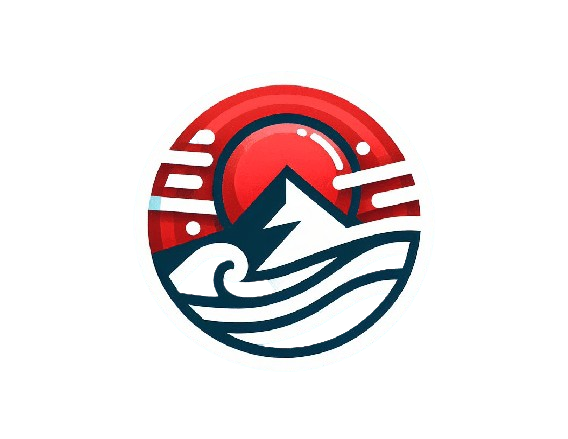1. Understanding Montana’s Unique Trucking Landscape
Montana’s vast terrains, from expansive plains to rugged mountain passes, offer distinct challenges for trucking operations. The state’s unpredictable weather, including harsh winters and sudden storms, adds layers of complexity. These factors necessitate comprehensive insurance coverage tailored to Montana’s specific conditions.
2. Legal Requirements: Federal and State Mandates
Trucking companies operating in Montana must adhere to both federal and state insurance requirements:
- Federal Mandates: The Federal Motor Carrier Safety Administration (FMCSA) requires interstate carriers to maintain minimum liability coverage, which varies based on cargo type and vehicle weight.
- State-Specific Requirements: Montana mandates additional coverage for intrastate operations. For instance, non-hazardous intrastate carriers must have a minimum of $25,000 for bodily injury or death of one person, $50,000 for bodily injury or death of two or more persons, and $20,000 for property damage .
3. Factors Influencing Insurance Premium
Several elements impact the cost of trucking insurance in Montana:
- Operational Radius: Long-haul routes, especially through remote areas, can increase premiums due to higher risk exposure.
- Cargo Type: Transporting hazardous materials or high-value goods typically results in higher insurance costs.
- Driver History: Clean driving records can lead to discounts, while violations or accidents may raise premiums.
- Vehicle Specifications: Newer trucks with advanced technology might have higher repair costs, influencing insurance rates.
4. The Role of AI and Telematics in Modern Trucking Insurance
Advancements in technology are reshaping the trucking insurance landscape:
- AI Dashcams: Artificial intelligence-powered cameras can detect distracted driving, monitor road conditions, and provide evidence in case of incidents, potentially reducing claim disputes citeturn search.
- Usage-Based Insurance (UBI): By analyzing driving patterns, insurers can offer personalized premiums, rewarding safe driving habits.
5. Navigating the Challenges of Rising Insurance Costs
The trucking industry faces escalating insurance premiums due to:
- Litigation and Nuclear Verdicts: High-value legal claims have led insurers to increase rates to mitigate potential losses.
- Repair and Replacement Costs: Modern trucks equipped with advanced technology can be expensive to repair, influencing insurance pricing.
- Fraudulent Claims: An uptick in staged accidents and fraudulent claims has prompted insurers to adjust premiums accordingly.
6. Strategies to Optimize Insurance Coverage
To manage and potentially reduce insurance costs:
- Implement Telematics: Utilizing telematics can provide data-driven insights, promoting safer driving and potentially lowering premiums.
- Regular Training: Ongoing driver education can enhance safety awareness, reducing the likelihood of accidents.
- Maintain Equipment: Regular vehicle maintenance ensures optimal performance and can prevent costly breakdowns.
- Review Policies Annually: Regularly assessing insurance policies ensures coverage aligns with current operational needs.
7. The Future of Trucking Insurance in Montana
Looking ahead, trucking insurance in Montana is poised to become more personalized and technology-driven. As AI and telematics become standard, insurers will have more tools to assess risk accurately, leading to more tailored coverage options. Trucking companies that embrace these technologies and prioritize safety will be better positioned to navigate the evolving insurance landscape.
Frequently Asked Questions
Q1: What are the minimum insurance requirements for trucking in Montana?
Montana requires intrastate, non-hazardous carriers to have minimum coverage of $25,000 for bodily injury or death of one person. They must have $50,000 coverage for bodily injury or death of two or more persons. The requirement for property damage is $20,000
Q2: How does telematics influence trucking insurance premiums?
Telematics provides real-time data on driving behaviors. It also provides data on vehicle performance. This allows insurers to assess risk more accurately. It can potentially offer lower premiums for safe driving practices cite.
Q3: Are AI dashcams beneficial for trucking operations?
Yes, AI dashcams can detect unsafe driving behaviors. They monitor road conditions and provide evidence in case of incidents. This enhances safety and potentially reduces insurance claims .
Q4: What factors can lead to increased trucking insurance costs?
Factors include litigation risks, high repair costs for modern vehicles, and an increase in fraudulent claims, all contributing to higher insurance premiums.
Q5: How can trucking companies in Montana reduce their insurance premiums?
Implementing telematics, conducting regular driver training, maintaining vehicles, and annually reviewing insurance policies can help in managing and potentially reducing premiums.
Q6: What is usage-based insurance (UBI) in trucking?
UBI is a model where insurance premiums are determined based on actual driving behaviors and patterns, promoting safer driving and offering personalized rates.
Conclusion
Navigating the complexities of trucking insurance in Montana requires a proactive approach, embracing technological advancements and prioritizing safety. Such as inquiring from your local independent agent “honk honk” https://amanninsurancesolutions.com/about/ Trucking companies can ensure comprehensive coverage by understanding the region’s unique challenges. They can also achieve operational efficiency and maintain financial stability by implementing strategic measures.
